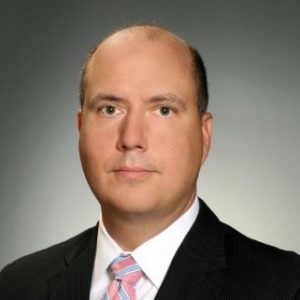
Eugene Grygo, Chief Content Editor, FTF News
Sometimes you are awakened by a concept that is so simple yet so stunning.
Such was the case with the opening remarks of industry veteran Ted Leveroni, now a principal at DerivProduct, who kicked off the DerivOps conference last month in Chicago. Over the years, Leveroni has been chief commercial officer for DTCC — Euroclear GlobalCollateral Ltd.; executive director — strategy and buy-side relations for the DTCC; and executive director of derivatives strategy for Omgeo.
His thesis is this: derivatives operations staff members should be so good at embracing automation that their positions will eventually make their roles obsolete, essentially ending their own jobs. They would then be free to move on to other challenging areas.
I asked Mr. Leveroni to share with me his notes for the speech so that I could quote them and he very generously sent them.
The germ of his opening remarks began when “three or four weeks ago I was having lunch with an industry colleague, reminiscing about that past 10 years of work,” Leveroni says. They were mulling their accomplishments in the derivatives and collateral management spaces. One of their conclusions they reached is that the securities industry is approaching the last of the “regulatory hurdles” mandated by the Dodd-Frank Wall Street Reform and Consumer Protection Act (Dodd-Frank) and the European Market Infrastructure Regulation (EMIR).
“So, is our work done?” Leveroni asks. “Our accomplishments are truly impressive.”
Leveroni lists these achievements as:
- The adoption of new unique identifiers such as the Legal Entity Identifier (LEI), the Unique Transaction Identifier (UTI) / Unique Swap

Ted Leveroni, principal, DerivPRODUCT
Identifier (USI) for EMIR reporting and more;
- The industry has implemented and connected to data repositories “all over the world, creating transparency in what was an opaque market;”
- The industry has established “countless new clearing agreements and relationships and implemented mandatory clearing for standardized instruments;”
- Derivatives processing has been “aided by new offerings and business models of collateral management service providers and vendors.” Industry participants have implemented a “robust two-way daily exchange of variation margin (VM) and made it the industry standard;”
- And industry participants are well on their way to “industry-wide, two-way [Initial Margin] IM.”
“So what is left, if anything?” Leveroni asks. “We have done a great job automating in-house, but the ‘roads and bridges’ that connect us — dealer and FCM [ to client, investment manager to custodian, etc. need to be addressed. Otherwise, the potential value that has been created from all our past accomplishments over the past 10 years will never fully be realized. We need to create a fully electronic/automated derivatives and collateral operational environment and eliminate manual processes.”
In his presentation, Leveroni notes two ways to move toward fully automated derivatives and collateral operational environment:
- “First, we need to adopt existing and developing ‘community-based offerings such as:
- Standardized electronic collateral call communications;
- Standardized collateral settlement notification;
- Centralized SIMM [Standard Initial Margin Model] calculations;
- And centralized swap and collateral reconciliations.”
- “Second is that we must work together as an industry to coalesce around standards that are currently not defined/developed/mature such as:
- Standard FCM broker statements;
- Standard models for IM segregation for the buy side;
- And standard communications and matching for swap cash-flows/reset payments.”
But what can be done now to move the derivatives industry closer to this dream of full automation? Leveroni is making the following suggestions:
- “Take advantage of events both in-person and virtual to challenge our industry colleagues;”
- “Talk to service providers that you have not adopted and tell them why their business models or offerings don’t make sense to you, so they can enhance it and clear the roadblocks to adoption;”
- “Engage with existing industry associations such as FIA, ISDA, SIFMA, ISITC, AII;”
- And “create your own ‘working group’ with industry leaders, if no association or working group already exists to work on your challenges.”
“A manager of operations should have the goal of eliminating as many manual touch points as possible thus decreasing cost to the end-investor and decreasing risk,” Leveroni concludes. “At its essence, our job is to make our job obsolete.”
His presentation sparked a lot of talks and even caused one industry veteran to say to me: “Wouldn’t it be cool to have started your career working on these problems and then to have solved them? I want to end my career like that.”
Need a Reprint?